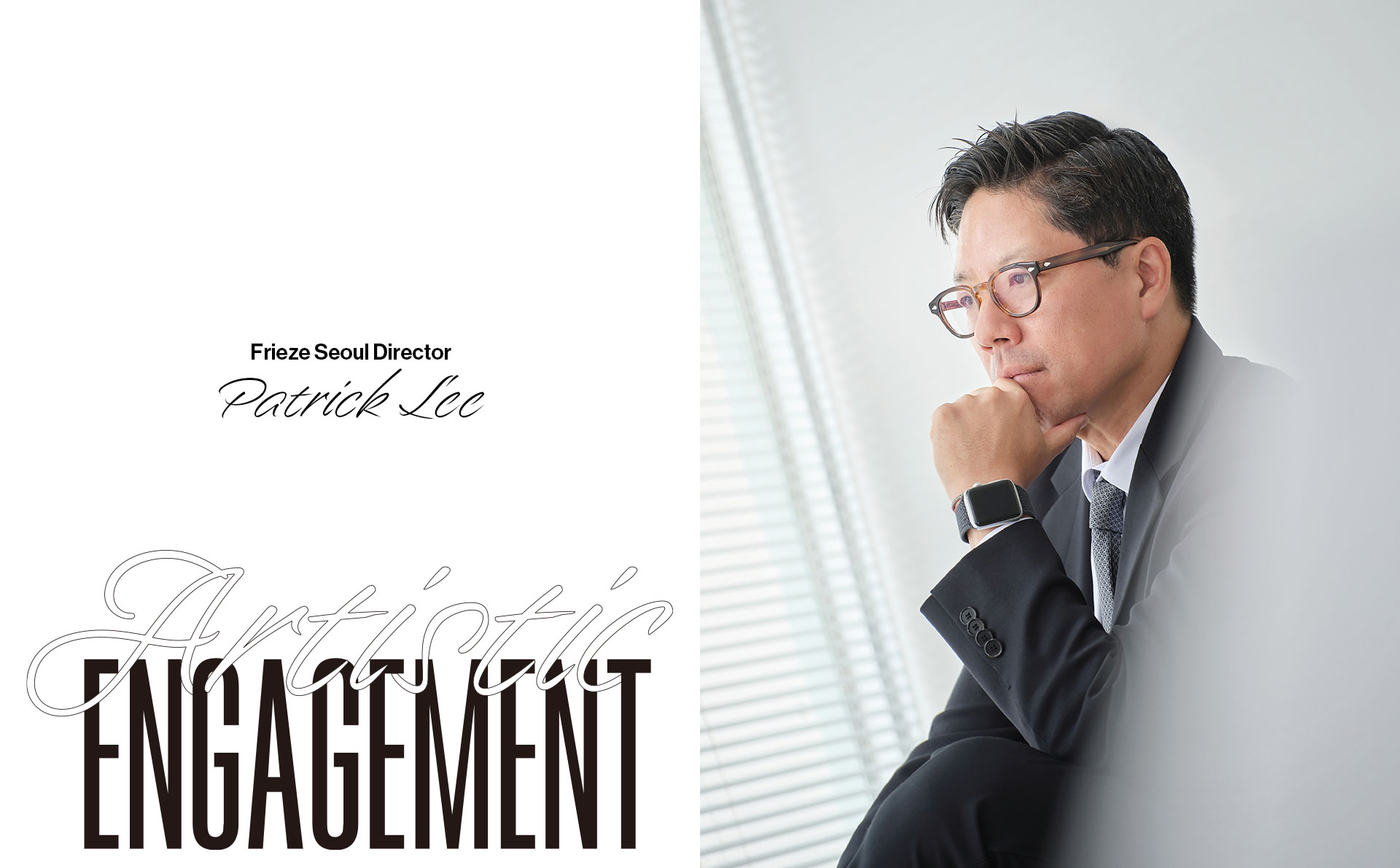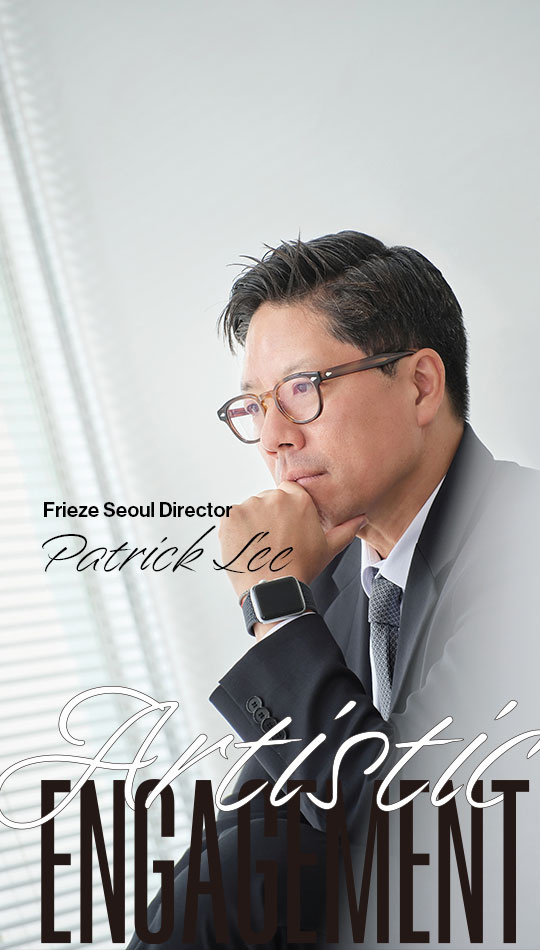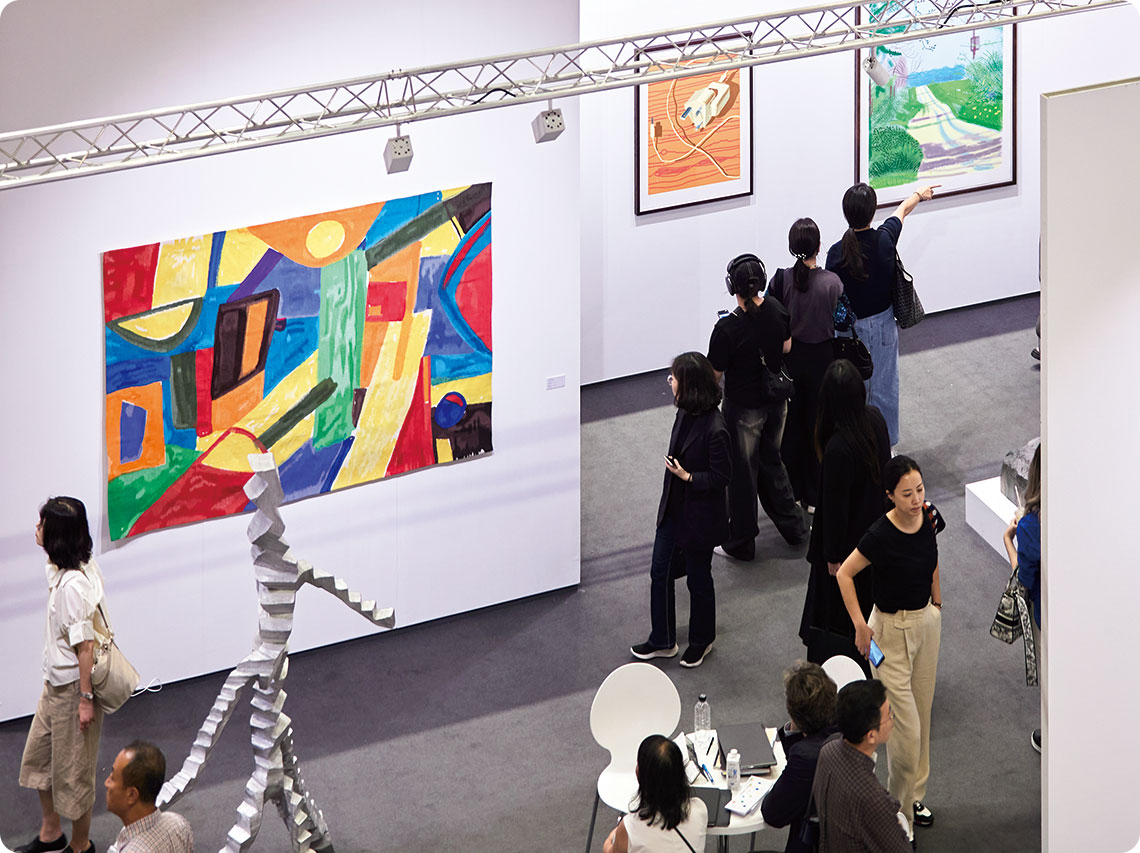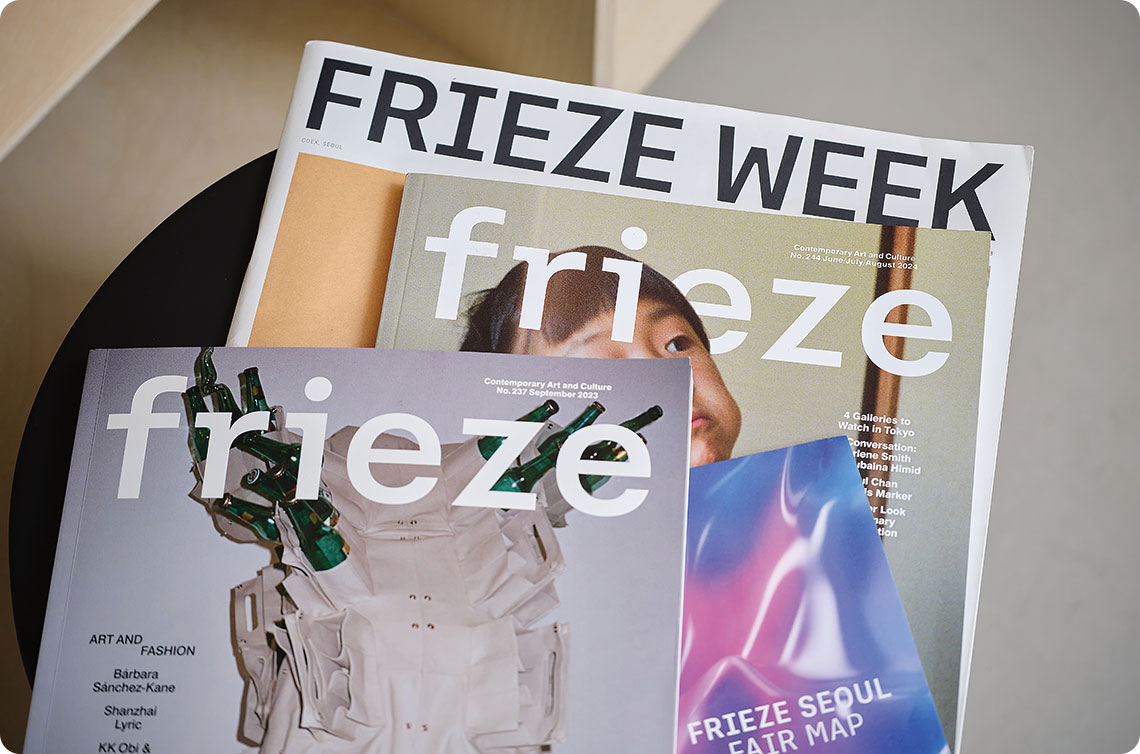Frieze Seoul, the Korean edition of the global art fair first hosted in London by the contemporary art magazine Frieze, returns for its third year. This year’s show features more than 110 galleries from 30 countries, particularly emphasizing Korean and Asian art spaces. In addition to the fair itself, Frieze Week will include film and music programs, late events and collaborations across Seoul.
Leading the effort is Patrick Lee, Frieze Seoul’s director since its inaugural event in 2021. For him, art fairs like Frieze Seoul are more than just commercial opportunities―they are spaces where galleries, curators, collectors, artists and other interested parties can build relationships and more deeply communicate.


Writer. Sung Ji Yeon
An Art World Pioneer
Lee has been active in the art world for close to 20 years. His art career began in 2005 when he opened his own gallery in Seoul, ONE AND J. GALLERY, where he started working with emerging Korean artists. “At that time, there were very few commercial galleries working with young artists,” he recalls.
Lee later joined Gallery Hyundai, one of the nation’s premier art spaces, where he participated in shows and major fairs worldwide during his two-and-a-half years as the gallery’s executive director. He also joined the Art Basel Hong Kong committee, serving in that capacity for four years.
Lee finally became the director of Frieze Seoul in October of 2021. He recalls that when Frieze announced they were coming to Seoul, he joined their committee and got to know the personalities involved. “I was their sounding board,” he says. “At one point, they were looking for a director, and I was making suggestions, and at some point, my name got thrown in the ring.”
 The second edition of Frieze Seoul held in 2023 / © Frieze
The second edition of Frieze Seoul held in 2023 / © Frieze
Tons of Work to Do
Though Frieze Seoul itself is just a four-day event, and Frieze Week lasts seven days, preparation for the events is a year-long process. “It always astounds me that we can be this busy,” Lee says.
As director, Lee’s job entails several responsibilities. “First and foremost is guiding the character of the types of galleries we’d like to show here,” he says. “And that process begins very early.”
Then comes programming. Lee says you need to compel people to want to come to Seoul for the event. This requires much time to plan and build programs, including talk programs, film programs, artist awards, music and performances. Lee says he especially loves working with young curators. After that, he is working with sponsors.
Very Strong Artistic Practice
Lee says Frieze’s coming to Korea as its first foray into Asia “validates the tremendous art scene here in Korea.” First and foremost, he points to Korea’s “incredibly strong” artistic practice, noting the many experimental avant-garde shows worldwide by young Korean curators. “That’s just the result of more connections to the machinations of the art world,” he says. “But that happens because of the organic growth of artistic practice here.”
Although Korea’s modern art scene is relatively young―the first Korean pavilion at the Venice Biennale opened in 1995, and Korea’s own biennales began roughly the same time―the country has quickly developed a robust artistic infrastructure. “As a home base in Asia, very few places can compete with Korea,” Lee says.
But in the end, it’s mainly about the talent. “Frieze is to create that platform where relationships happen,” Lee says. “My job is to get the maximum number of incredible voices together to talk about artistic practice. We’re fortunate to be here because there’s so much talent.”
A Very Asian Frieze
While Frieze has fairs worldwide, Lee purposely avoided a “cookie-cutter fair.” In particular, he wanted to support not only Korea but all of Asia. “I think of Frieze Seoul as an Asia-based fair,” he says. “In the first year, we were over 33% Asian galleries. The second year was over 40%, and we are ever higher this year.”
“Major foreign galleries and Asia-based galleries, artists and curators also have a platform to reach a broader audience,” he adds.
In Korea, Frieze collaborates with the Korea International Art Fair, or Kiaf, one of the nation’s oldest such platforms. While the two fairs are separate, they offer a shared ticket that grants access to both. “I like to think we introduced Kiaf to a global audience, and Kiaf helped Frieze gain access to the popular landmark COEX Convention Center,” Lee says.
 The world-renowned art fair Frieze began in 1991 as a magazine covering contemporary art and culture.
The world-renowned art fair Frieze began in 1991 as a magazine covering contemporary art and culture.
Engagement, Engagement, Engagement
If there’s one theme or keyword to sum up this year’s Frieze Seoul, it would be engagement, Lee says. “It’s just about making a statement with the quality, for the visitors to engage with the galleries,” he says. “You need to create that compulsion to travel to Seoul in September. So many pieces come together.”
For Lee, a successful art fair is about connections and engagement, rather than sales. “When I was a gallerist, I always judged the quality of the art fair by the quality of the audience I met,” he says. “These relationships can last a lifetime and lead to opportunities. So, I want the galleries to meet collectors, but I also want them just as much to meet curators of major institutions, writers, everybody,” he says. Lee expects this year’s fair to provide even more opportunities for people to engage. “The people coming, the diverse audience, it’s gonna surpass last year,” he says.
He explains that not only have new programs launched last year been retained, but they’ve also expanded programs as well. For instance, the popular “nights” program, where galleries in various neighborhoods of Seoul stay open late for visitors, has been extended to include the hip Euljiro district, home to many small, non-profit spaces. The fair has also added the Frieze Live program for performing arts.
Keeping an Open Mind
Like any art fair, Frieze Seoul’ aims to promote the Korean art market. “Working hand in hand with every major institution here and highlighting their programming and making sure our guests visit is the best way to do that,” Lee says. This year’s Frieze also overlaps with two of Korea’s top art biennales in Busan and Gwangju.
Lee says he’s “incredibly bullish” about the changes he’s experienced in the Korean art market. “There’s deep engagement and no turning back,” he says. “The quality is there, the intelligence is there, the market is there. The collector base in Korea is very strong.”
Ultimately, Lee encourages visitors to Frieze Seoul to come with an open mind. “Every city would have an amazing landscape for art, be it museums or galleries. If you’re attuned to exploring, come with an open mind,” he says.
